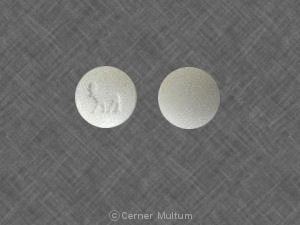Prandin Disease Interactions
There are 5 disease interactions with Prandin (repaglinide).
Meglitinides (applies to Prandin) type I diabetes
Major Potential Hazard, Moderate plausibility. Applicable conditions: Diabetes Type 1, Diabetic Ketoacidosis
The use of meglitinides is contraindicated in patients with type I diabetes or for the treatment of diabetic ketoacidosis, with or without coma.
Oral hypoglycemic agents (applies to Prandin) cardiovascular risk
Major Potential Hazard, Moderate plausibility. Applicable conditions: Cardiovascular Disease
The use of oral hypoglycemic agents may be associated with an increased risk of cardiovascular mortality compared to treatment with diet alone or diet with insulin. This warning is based on the University Group Diabetes Program (UGDP) study, a long-term prospective clinical trial designed to evaluate the effectiveness of glucose-lowering drugs in preventing or delaying vascular complications in patients with non-insulin-dependent diabetes. Patients treated with diet plus a fixed dosage of either tolbutamide (a sulfonylurea) or phenformin (a biguanide) for 5 to 8 years had a cardiovascular mortality rate approximately 2.5 times that of patients treated with diet alone, resulting in discontinuation of both these treatments in the study. Despite controversy regarding interpretation of these results, clinicians and patients should be aware of the potential risk when making treatment decisions for diabetes, particularly in the presence of underlying cardiovascular disease. Data are not available for other sulfonylureas or biguanides, nor for hypoglycemic agents belonging to other classes. However, given the similarities in chemical structure and/or mode of action, the same caution should be applied.
Insulin/oral hypoglycemic agents (applies to Prandin) hypoglycemia
Moderate Potential Hazard, Moderate plausibility. Applicable conditions: Adrenal Insufficiency, Malnourished, Panhypopituitarism, Autonomic Neuropathy, Anorexia/Feeding Problems
Hypoglycemia may commonly occur during treatment with insulin and/or oral hypoglycemic agents. Care should be taken in patients who may be particularly susceptible to the development of hypoglycemic episodes during the use of these drugs, including those who are debilitated or malnourished, those with defective counterregulatory mechanisms (e.g., autonomic neuropathy and adrenal or pituitary insufficiency), and those receiving beta-adrenergic blocking agents.
Repaglinide (applies to Prandin) liver disease
Moderate Potential Hazard, Moderate plausibility.
Repaglinide is almost completely metabolized in the liver to pharmacologically inactive substances. Patients with impaired liver function may be exposed to higher concentrations of repaglinide and its associated metabolites. Higher serum drug levels, in addition to diminished gluconeogenic capacity secondary to hepatic insufficiency, may increase the potential for severe hypoglycemic episodes. Therapy with repaglinide should be administered cautiously in patients with liver disease. Longer intervals between dosage adjustments may be required.
Repaglinide (applies to Prandin) renal impairment
Moderate Potential Hazard, Moderate plausibility. Applicable conditions: Renal Dysfunction, Diabetes Mellitus
Patients with severely reduced renal function treated with repaglinide had elevated plasma drug concentrations. Patients with type 2 diabetes who have severe renal function impairment should initiate repaglinide therapy with the 0.5 mg dose and subsequently, patients should be carefully titrated.
Prandin drug interactions
There are 512 drug interactions with Prandin (repaglinide).
Prandin alcohol/food interactions
There are 2 alcohol/food interactions with Prandin (repaglinide).
More about Prandin (repaglinide)
- Prandin consumer information
- Check interactions
- Compare alternatives
- Reviews (8)
- Drug images
- Side effects
- Dosage information
- During pregnancy
- Drug class: meglitinides
- Breastfeeding
- En español
Related treatment guides
Drug Interaction Classification
| Highly clinically significant. Avoid combinations; the risk of the interaction outweighs the benefit. | |
| Moderately clinically significant. Usually avoid combinations; use it only under special circumstances. | |
| Minimally clinically significant. Minimize risk; assess risk and consider an alternative drug, take steps to circumvent the interaction risk and/or institute a monitoring plan. | |
| No interaction information available. |
Further information
Always consult your healthcare provider to ensure the information displayed on this page applies to your personal circumstances.


